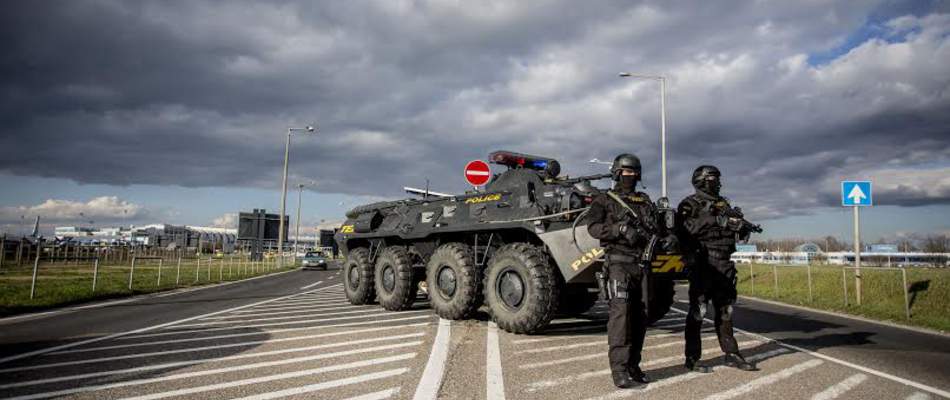Polish-Hungarian friendship and brotherhood through history
Since Russia’s invasion of Ukraine began, Polish-Hungarian diplomatic relations have reached an all-time low. These two nations who used to have extensive, one could say special relations with each other for centuries are now further apart than they’ve ever been. Instead of talking about why this has happened, let’s instead take a look at the numerous events in history which helped forge this strong bond between the two countries.
Dynastic ties
The oldest ties between Poland and Hungary go all the way back to the creation of both states. They both came to be independent Christian kingdoms at around 1,000 AD. Beset on the West by the stronger and more influential Holy Roman Empire, and on the East by the richer Kievan Rus, the two countries established good relations with each other from the start.
The Polish Piast and the Hungarian Árpád dynastic families have been connected since the very beginning. Béla I of Hungary had a Polish Piast wife, whom he wed during his exile from the country. Following the extinction of both original ruling houses, Louis I united the two kingdoms in a personal union between 1370 and 1382. After a brief time period, the two thrones were united once again by Wladyslaw of Jagiello from 1440 until his death at the Battle of Várna in 1444.
The last common ruler of both states was a Hungarian nobleman, Stephan Báthory, who was duke of Transylvania before the Szlachta (Polish nobility) elected him to lead the Polish-Lithuanian Commonwealth. He presided over both states between 1576 and 1586. He was buried at the Wawel Castle in Kraków and is considered an influential leader throughout the history of both countries.
Fight for independence
From the 15th century, both Poland and Hungary had started facing common threats from neighbouring powers. One was the army of the Ottoman Turks who entered into constant wars against the two kingdoms. Possibly the most decisive moment of cooperation came in 1683 during the Second Siege of Vienna.
Turkish forces were poised to take the Austrian capital when the Polish army arrived at the nick of time. They swept away the Ottoman army with one of the largest cavalry charges ever recorded in history. In the following years, the Polish troops together with the Holy League helped liberate the whole Hungary from Ottoman occupation
Later in the 18th-19th centuries, both Poland and Hungary suffered under the yoke of foreign powers. Rákóczi II, leader of the Rákóczi Uprising (1703-1711) published his famous declaration from the Polish city of Brzeżany (nowadays Berezhany in Ukraine) before returning home to lead the anti-Habsburg movement.
Throughout the 19th century, nationals of both countries helped in each other’s independence movements. Hungarian soldiers fought with and helped Polish insurgents in the November Uprising of 1830. And in 1848-49, during the Hungarian Revolution and War of Independence, thousands of Polish volunteers joined the Hungarian army fighting against the Habsburg monarchy. Polish general Józef Bem, for example, became an esteemed military commander and national hero in both states.
20th century
After the end of WW1 and the foundation of the modern Polish state, the Hungarian government tried to send aid to their Polish counterparts in their war against Soviet Russia. This was denied by the Czechoslovak and Romanian states. However, hundreds of Hungarian volunteers still joined the Polish army to help fight for the country’s independence.
In the wake of Germany’s invasion of Poland in September 1939, Hitler asked Hungary to enable his troops to move within the border of the country. Prime Minister Count Pál Teleki refused to allow this. Following the collapse of the Polish state after the dual invasions, Hungary gave permission to tens of thousands of Polish refugees and soldiers to cross through the borders and rejoin the war against Germany someplace else. At the end of the war in 1944 during the Warsaw Uprising Hungarian troops actively helped out Polish insurgents and the citizens of the city in their fight against the Nazi occupiers.
Not many people know, but the Hungarian Revolution of 1956 originally started as a solidarity protest. Participants were showing their support to those Polish people who started demanding a regime change and the removal of Stalinist leader Bolesław Bierut from power. Subsequently, the newly appointed Władysław Gomułka supported Imre Nagy’s government against the Soviets.
Modern-day
The last important milestone in the history of relations between the two nations was the creation of the Visegrád Group political alliance in 1991, after the fall of communism and the Iron Curtain. They both promised to uphold strong cooperation and work together towards NATO and EU ascension which they both reached by 2004. Since then, until the Russian invasion of Ukraine and Hungary’s increasingly pro-Russian stance in the conflict, ties have been strong. Nowadays we can see that these millennium-old brotherly ties are going awry. This is why we found it important to recall the common historical heritage the two states have and hope that soon enough things will change for the better between them.
Polak, Węgier, dwa bratanki – Lengyel-magyar két jó barát
(Poles-Hungarians like good old friends)
please make a donation here
Hot news
Top Hungary news: train derailed, huge tax against short-term rentals, new train stations, Hungarians about the war, Dracula, cocktail bars — 21 October, 2024
Hungarian research could yield breakthrough in Covid-19 treatment
5+1 stylish cocktail bars in Budapest to explore with your friends after a long day
Railway stations in major Hungarian cities to be completely rebuilt with private capital
Young people planning armed attacks against protected persons in Hungary – US intelligence warns
Hungary, Laos agriculture ties strengthening: Minister Linkham Duangsavanh visits Budapest




